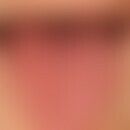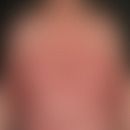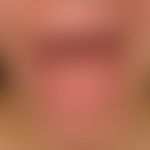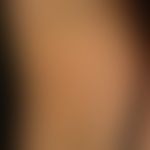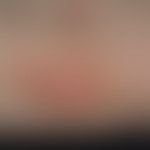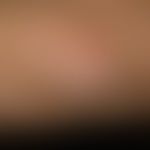Synonym(s)
HistoryThis section has been translated automatically.
Siebenmann, 1908; Lutz 1922; Wiethe, 1924; Rössle, 1927; Urbach, 1933;
DefinitionThis section has been translated automatically.
Rare, autosomal recessive genodermatosis characterized by deposition of hyaline and lipid-containing substances on the basal laminae of skin and mucous membranes. In the course of the disease, cerebral and cutaneous vessels may be affected.
You might also be interested in
Occurrence/EpidemiologyThis section has been translated automatically.
LP occurs worldwide, but is rare; only around 400 cases have been described in the medical literature. Men and women are equally affected. The Namaqualand region in South Africa has the highest number of LP patients (here predominantly among immigrants of German origin) who share a common mutation, which indicates a founder effect. In countries where consanguinity is more common, LP occurs more frequently.
EtiopathogenesisThis section has been translated automatically.
LP is caused by a homozygous or compound heterozygous loss-of-function mutation in the gene for extracellular matrix protein 1(ECM1) located on chromosome 1q21 (LeWitt TM et al. 2023). Most ECM1 mutations are frameshift or nonsense mutations in exons 6 or 7, resulting in a truncated ECM1. The ECM1 gene encodes glycoproteins that are important for the integrity of the basement membrane and extracellular matrix, skin adhesion and protein-protein interactions. As there are different ECM1 splice variants and mutations, many LP genotypes and phenotypes are possible (LeWitt TM et al. 2023). LP is inherited in an autosomal recessive manner. Patients often have affected family members, and some are children of consanguineous parents. The mutations within the ECM1 gene lead to impaired protein-protein interactions and disturbed tissue homeostasis. The hyaline-like accumulation in various tissues explains many classic clinical findings such as hoarseness, moniliform blepharosis and seizures.
Pathogenetically, the hyaline material appears to result from protein leakage from the vessels and from secretory activity of the fibroblasts as well as secondary lipid deposits. The deposits contain basement membrane components and collagen types III, IV and V.
PathophysiologyThis section has been translated automatically.
ECM1 is a glycoprotein that fulfills various extracutaneous functions, including the regulation of endochondral bone and cartilage formation, endothelial cell proliferation and angiogenesis, and dendritic cell differentiation. High ECM1 expression can be associated with certain malignant diseases. In the skin, ECM1 interacts with the basement membrane-specific heparan sulfate proteoglycan (HSPG) core protein, also known as perlecan, and other proteins important for ECM structure and tissue remodeling, such as matrix metalloproteinase-9, fibulin-3 and laminin 332. Certain ECM1 splice variants are expressed in basal keratinocytes and suprabasal cells, suggesting a possible role in keratinocyte differentiation. ECM1 expression is decreased in individuals with chronic UV light exposure, suggesting an additional role in the skin stress response. Ultrastructural analysis of erosive lesions in a child revealed "free floating" desmosomes as well as a loss of connectivity between some desmosomes and the keratin filament network. This suggests a possible role of ECM1 in the connection between keratin filaments and desmosomes (LeWitt TM et al. 2023).
ManifestationThis section has been translated automatically.
Age at diagnosis: infancy or early childhood (1-3 years). Initial symptoms = hoarseness.
LocalizationThis section has been translated automatically.
ClinicThis section has been translated automatically.
Initial symptoms:
- First symptoms are usually (an unexplained) hoarseness (caused by deposits of hyaline material in the larynx)!
- The first skin symptoms are small crusts and vesicles on the face and extremities. These lead to small acneiform "ice-pick" scars.
Later skin manifestations:
- First impression is rigid facial expression with marked perioral and frontal furrowing. Yellowish-white, pinhead-sized nodules; on the extensor sides of the extremities: confluence to plate-like, rough plaques, sometimes with brownish verrucous or crusty surface.
- Blistering and ulceration are possible after even minor trauma. Healing with pockmarked scarring.
- Delayed hair and nail growth, possibly permanent hair loss ( scarring alopecia) due to hyaline deposits.
- Differentially important is a pronounced vulnerability and blistering of the skin already in infancy and early childhood.
Extracutaneous manifestations:
- Even before the skin manifestations, pale-white to white-yellowish, usually prominent deposits become visible, especially on buccal mucosa, labial mucosa, pharynx, tonsils and larynx.
- Increasing macroglossia, loss of tongue mobility due to a thickened lingual frenulum.
- Painful recurrent parotid swelling (narrowing of the parotid duct) and dysphagia.
- Persistent deciduous dentition with aplasia or hypoplasia of the lateral maxillary incisors.
- Involvement of trachea and bronchi up to airway obstruction is possible.
- Involvement of esophagus, stomach, rectum, and vagina; decreased wound healing tendency.
- Associated symptoms: Including seizures, mental retardation, symmetrical calcifications in the brain.
LaboratoryThis section has been translated automatically.
HistologyThis section has been translated automatically.
Rather flat surface epithelium with marked orthokeratotic hyperkeratosis. The papillary dermis is hyalinized, swollen, and cell-poor. Extracellular PAS-positive, diastase-resistant hyaline deposits in the stratum papillare and stratum reticulare around vessels and adnexa. In older foci, these deposits are onion-skin thickened and may fill the entire papillary dermis. Vigorous hyaline deposits are also found around the eccrine sweat glands.
Electron microscopy: Subepidermal zone composed of basal laminae of the dermo-epidermal junctional zone, between which hyaline material is intercalated. The vessels are surrounded by basal laminae and hyaline material in a mantle shape. In the upper dermis, the elastic fibers are almost completely displaced.
Differential diagnosisThis section has been translated automatically.
TherapyThis section has been translated automatically.
Progression/forecastThis section has been translated automatically.
LiteratureThis section has been translated automatically.
- Dogramaci AC et al. (2012) Lipoid proteinosis in the eastern Mediterranean region of Turkey. Indian J Dermatol Venereol Leprol 78:318-322
- Hamada T et al. (2002) Lipoid proteinosis maps to 1q21 and is caused by mutations in the extracellular matrix protein 1 gene (ECM1). Hum Mol Genet 11: 833-840
- LeWitt TM et al (2023) Lipoid proteinosis. In: StatPearls [Internet]. Treasure Island (FL): StatPearls Publishing; 2023 Jan-. PMID: 33760528.
- Ramsey ML, Tschen JA, Wolf JE Jr (1985) Lipoid proteinosis. Int J Dermatol 24: 230-232
- Siebert M et al. (2003) Amygdala, affect and cognition: evidence from 10 patients with Urbach-Wiethe disease. Brain 126: 1-11
- Urbach E (1933) Cutaneous lipoidoses. Derm Z Berlin 66: 371
- Urbach E, Wiethe C (1929) Lipoidosis cutis et mucosae. Virchows Arch Path Anat 273: 285-319
- Vago B et al. (2007) Hyalinosis cutis et mucosae. JDDG 5: 401-405
- Wiethe C (1924) Congenital, diffuse hyaline deposits in the upper airways, familial occurrence. Z Hals-, Nasen-, Ohrenheilk 10: 359
- Wong CK et al. (1988) Remarkable response of lipoid proteinosis to oral dimethyl sulphoxide. Br J Dermatol 119: 514-544
- Zhang R et al. (2014) Treatment of lipoid proteinosis due to the p.C220G mutation in ECM1, a major allele in Chinese patients. J Transl Med 12:85
Incoming links (13)
Colloidalmilium; Gingival hyperplasia; Hyalinoses; Hyalinosis cutis et mucosae, acquired; Lipoid proteinosis; Lipoid proteinosis; Lipoid proteinosis in photosensitivity; Lipoid proteinosis urbach-wiethe; Lung diseases, skin changes; Macroglossia; ... Show allOutgoing links (9)
Acanthosis nigricans (overview); Alopecia scarring; Amyloidosis (overview); Colloidalmilium; Dimethyl sulfoxide; EMC1 gene; Macroglossia; Protoporphyria erythropoetica; Smallpox;Disclaimer
Please ask your physician for a reliable diagnosis. This website is only meant as a reference.
